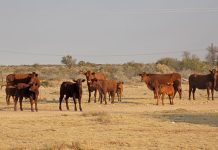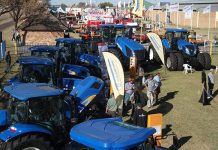Lourie Bosman, president of Agri SA, reviews the year and outlines the challenges facing the agricultural industry in the year to come. These include improved competitiveness and safety and security.
Last year brought blessings but also many challenges for agriculture. The expansion of the biofuel industry, especially in the US and Brazil, absorbed world surpluses of grain, oilseeds and sugar, to which commodity prices responded positively. Commodities such as animal feed, which use these farm products as inputs, had to absorb the higher cost but succeeded in attaining higher prices within firm market conditions.
These market trends were supported by an increase in demand within the large developing markets of China and India – probably a long-term situation with positive future price structures for agricultural commodities. The economics aspect T here was an upward structural adjustment in demand for farm products and food, though production growth lagged behind. International expectations are that primary producers and agribusinesses will experience firmer market conditions and can plan accordingly. Improved profit margins will probably attract investment to agriculture, also creating an upward adjustment in production. he impact of these conditions on South Africa is seen in higher producer prices and food price inflation, which seems to be one of the greater causes of inflationary pressure in our economy.
Drought hit hard
Some regions and commodities experienced hardship in 2007, particularly in summer cropping regions, where drought conditions led to lower crop yields with disastrous implications for many. While gradual progress has been made on a disaster management policy and programme for agriculture, government still does very little to protect farmers against bankruptcy. Implementing the relevant policy initiatives is a priority. The image of agriculture A gri SA feels compelled to maintain comprehensive networking relationships with the business sector, locally and internationally, and with government, statutory bodies and other organisations and groupings in civil society, to effectively promote the interests of the sector. Here the image of commercial agriculture plays a key role.
Last year government placed enormous pressure on commercial agriculture with regard to human rights issues. matter was discussed in depth with the minister of agriculture and land affairs in February 2007, and a better understanding was reached. Unfinished and planned inquiries by the Human Rights Commission, however, indicate that this issue continues to be controversial and will remain relevant during 2008. Against this background, Agri decided to give more focused attention in future to communicating with opinion-formers and decision-makers, to give them broader and deeper knowledge of agriculture and rectify negative perceptions of commercial agriculture.
Policy challenges
Agri faced many policy challenges during 2007, particularly the implementation of the policy documents that our congress accepted last year. With regard to land reform and farmer development, much work was done on developing guidelines for local land forums; conceptualising a Special Purpose Vehicle to streamline functions concerning land acquisition, funding and post-settlement support; and addressing operational problems with the Farmer Development Trust, which is run in cooperation with the National African Farmers’ Union of South Africa. It seems the contribution of the Post-land Summit Steering Committee (in which Agri SA participated) to policy-making is dwindling. Against this backdrop Agri SA has stepped up its liaison with the Department of Land Affairs regarding various policy processes.
Challenges for the year ahead
The challenge of improving agriculture’s competitiveness and profitability was set out in a policy document approved by congress. Last year a spectrum of issues, including inputs regarding taxes and levies, infrastructure, competition relating to input supply, technology policy, disaster management and market expansion were addressed. Considerable progress was made with the latter during the report year, with a trade and tariff policy for agriculture now being considered by government.
National safety and security issues are still one of our priorities. Among other things, Agri SA’s Safety and Security Committee dealt in depth with government’s security structures and gave external organisations information that placed agriculture’s security problems correctly within the context of South Africa’s crime situation. We also tried to find solutions to such problems. There are various challenges to be resolved in 2008, including BEE, land reform and economic issues. If Agri SA and government together do not succeed in creating conditions for sustainable, profitable agricultural production, I suspect increasing frustration and instability will become unavoidable. |fw








